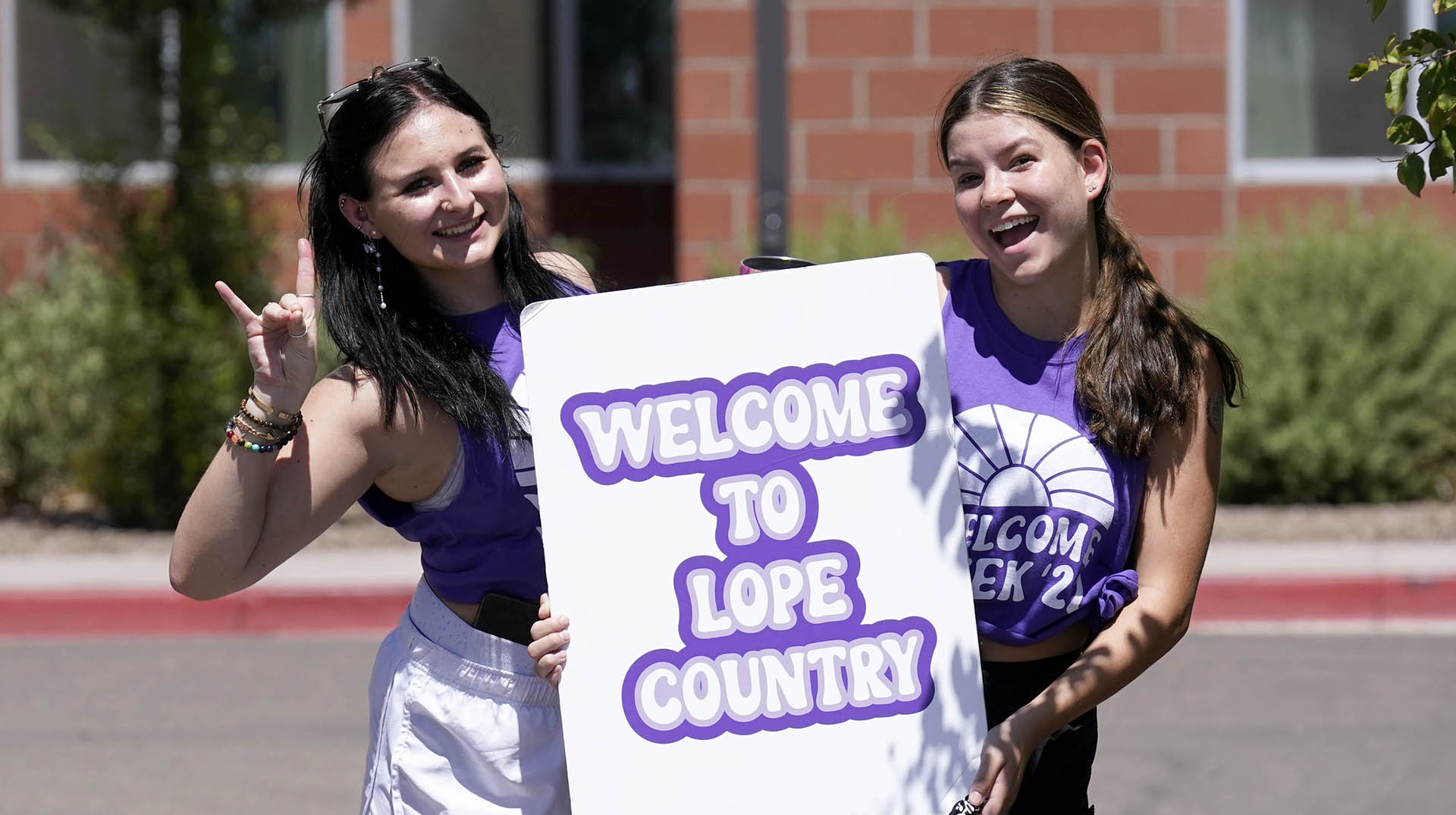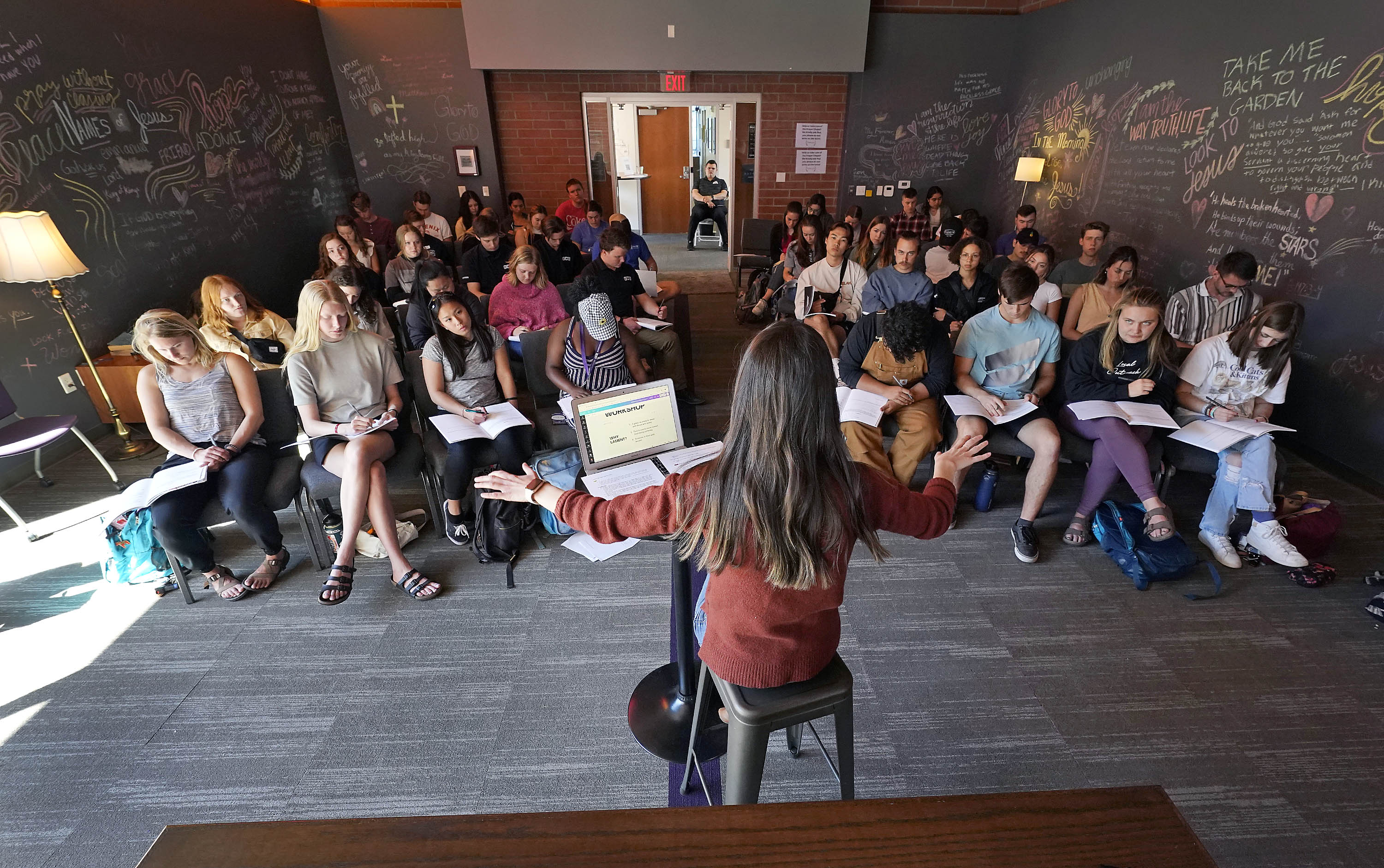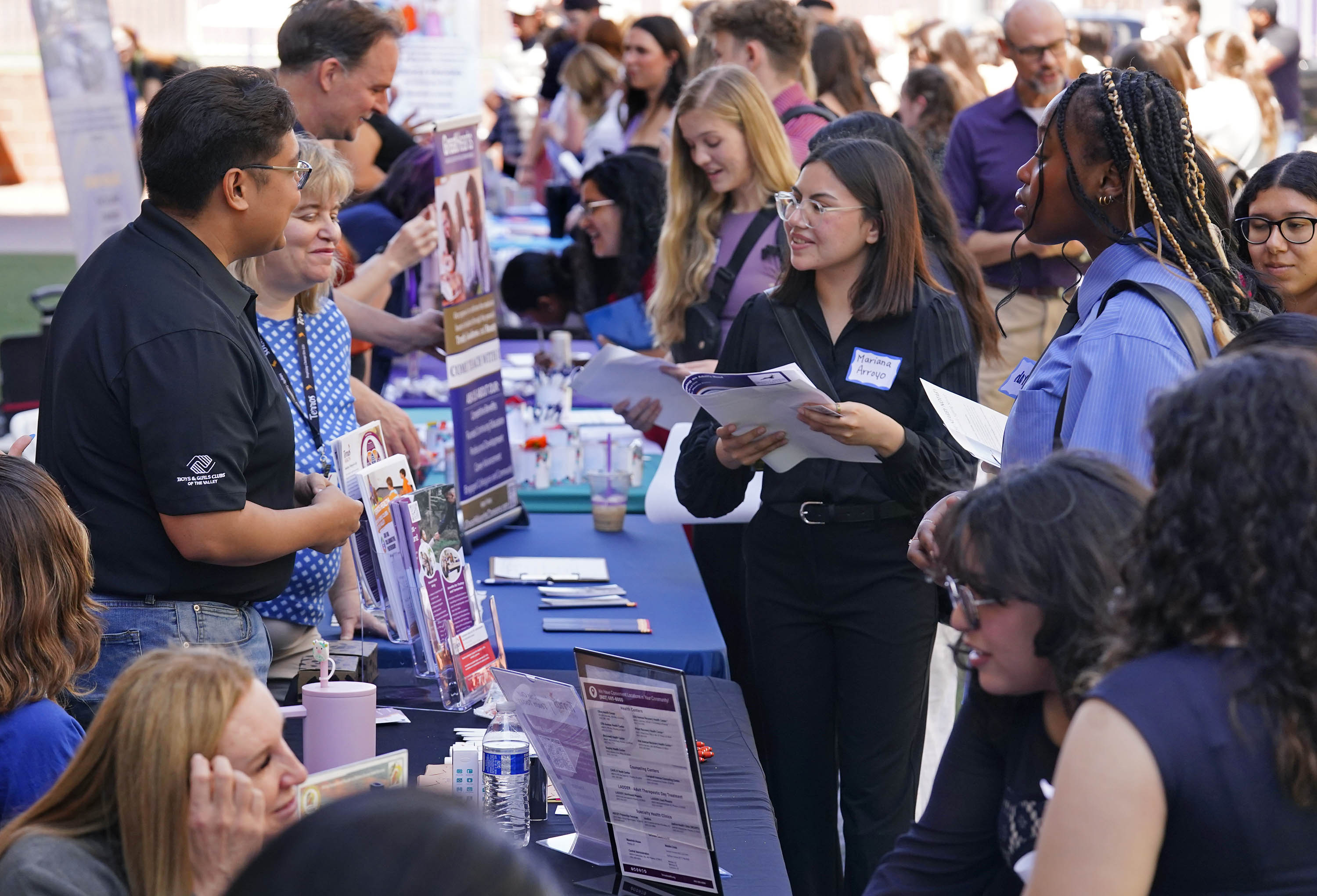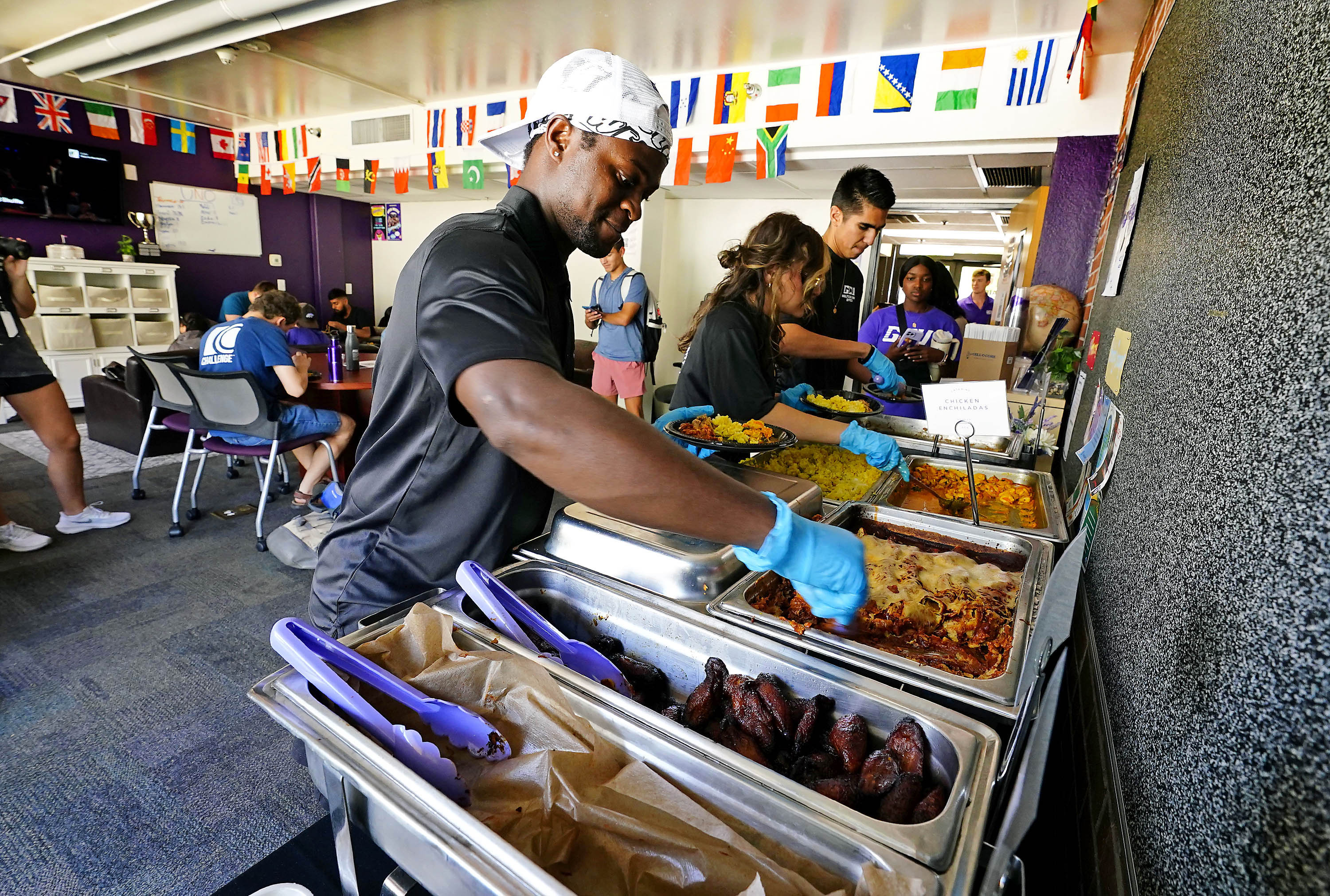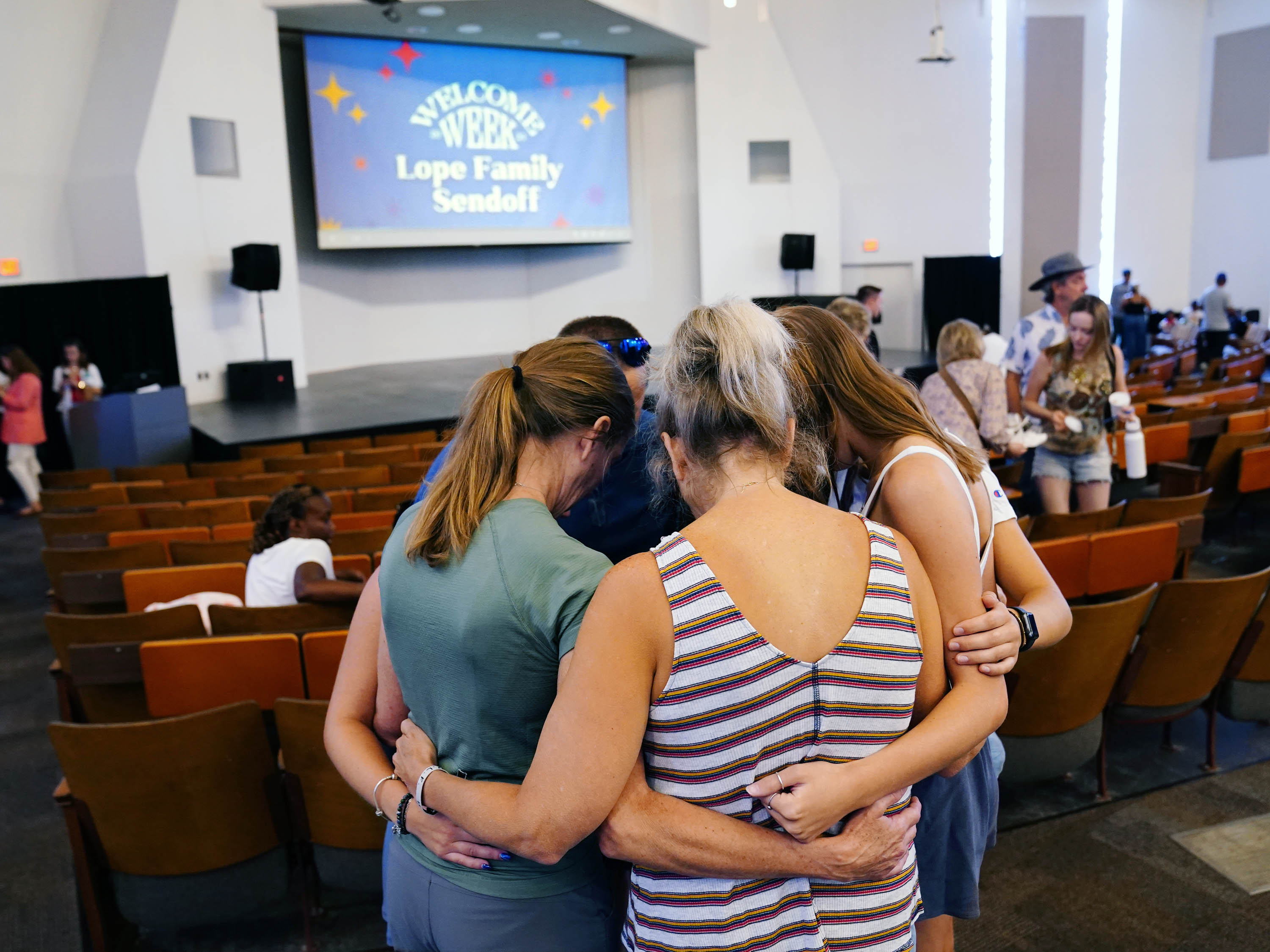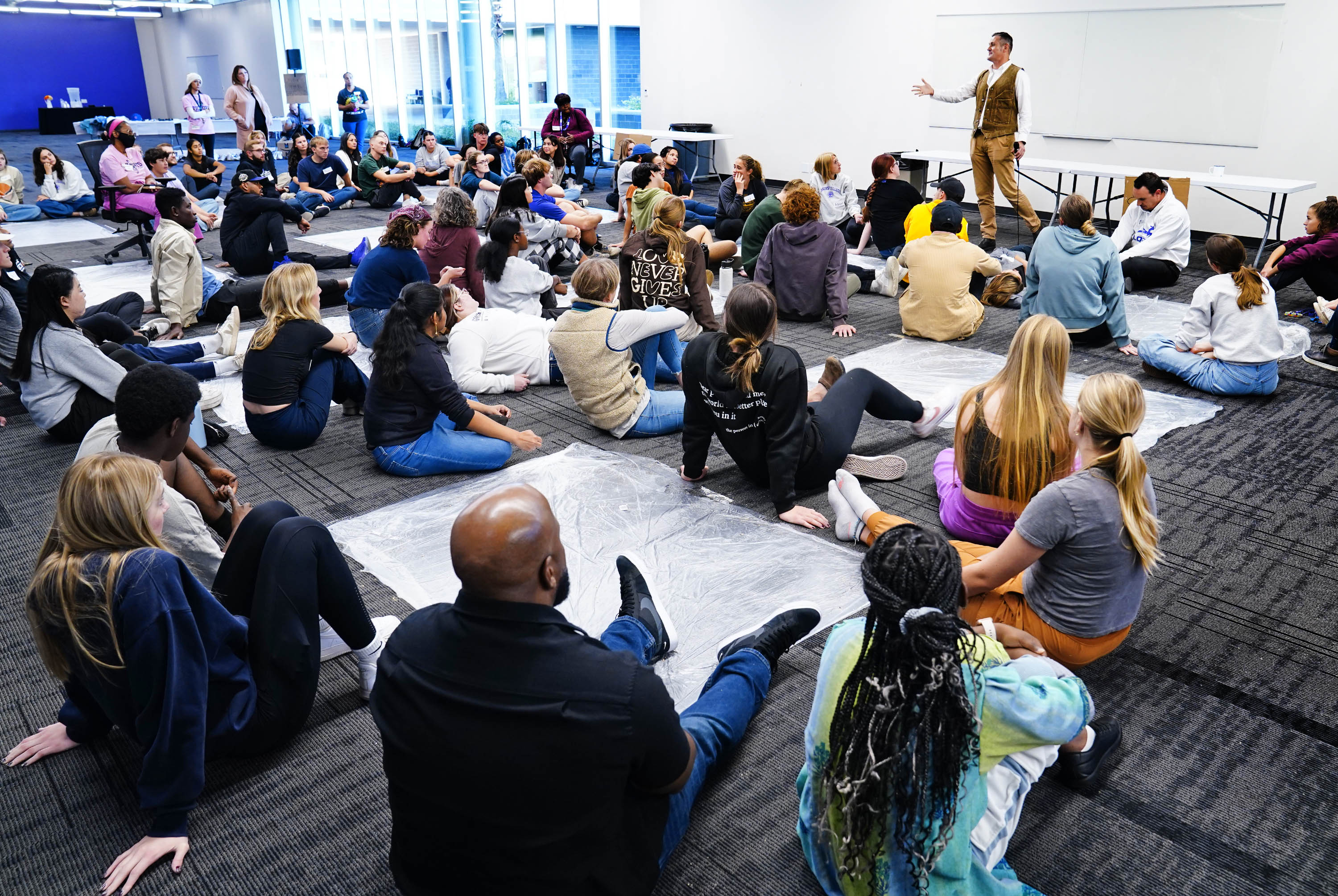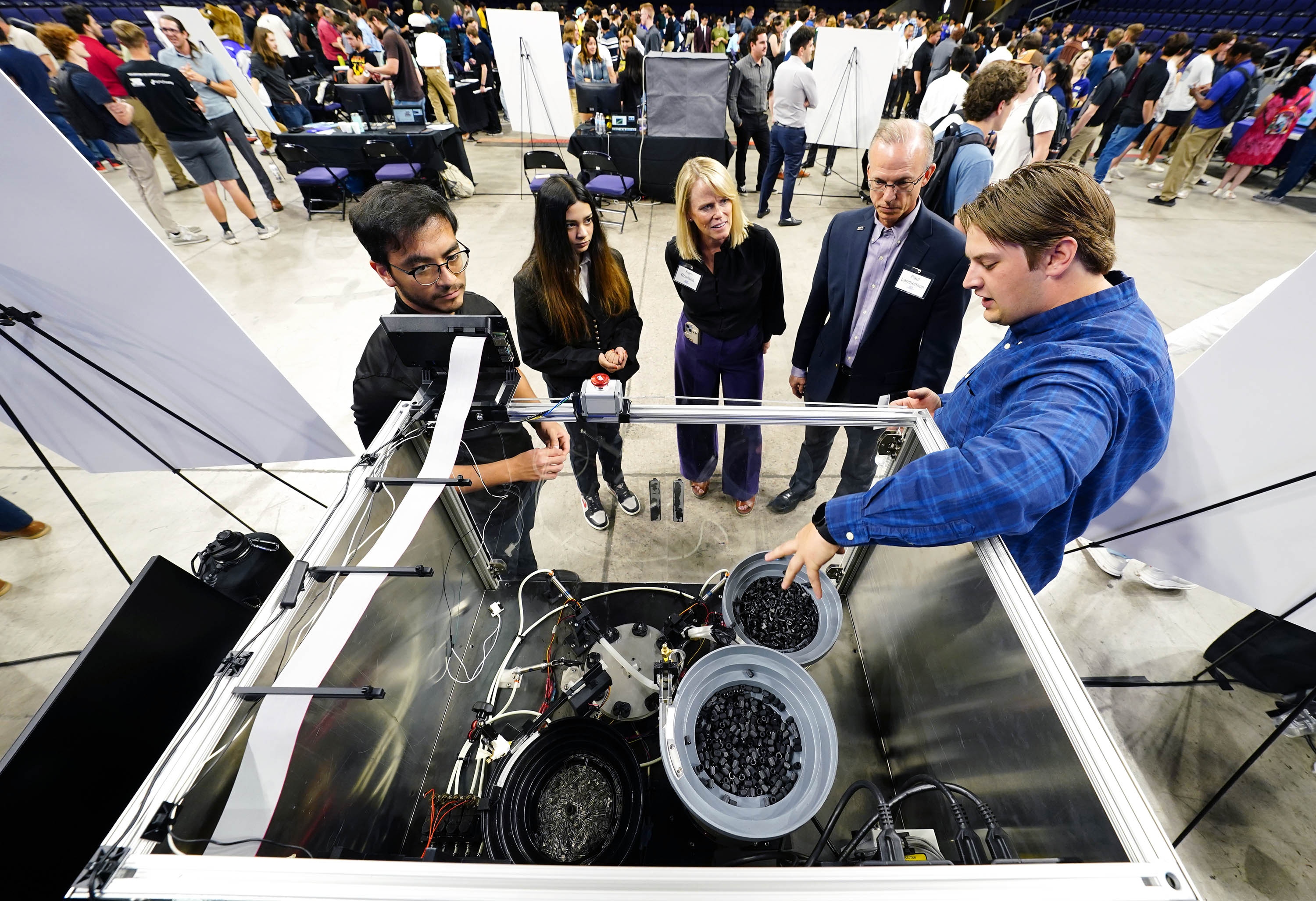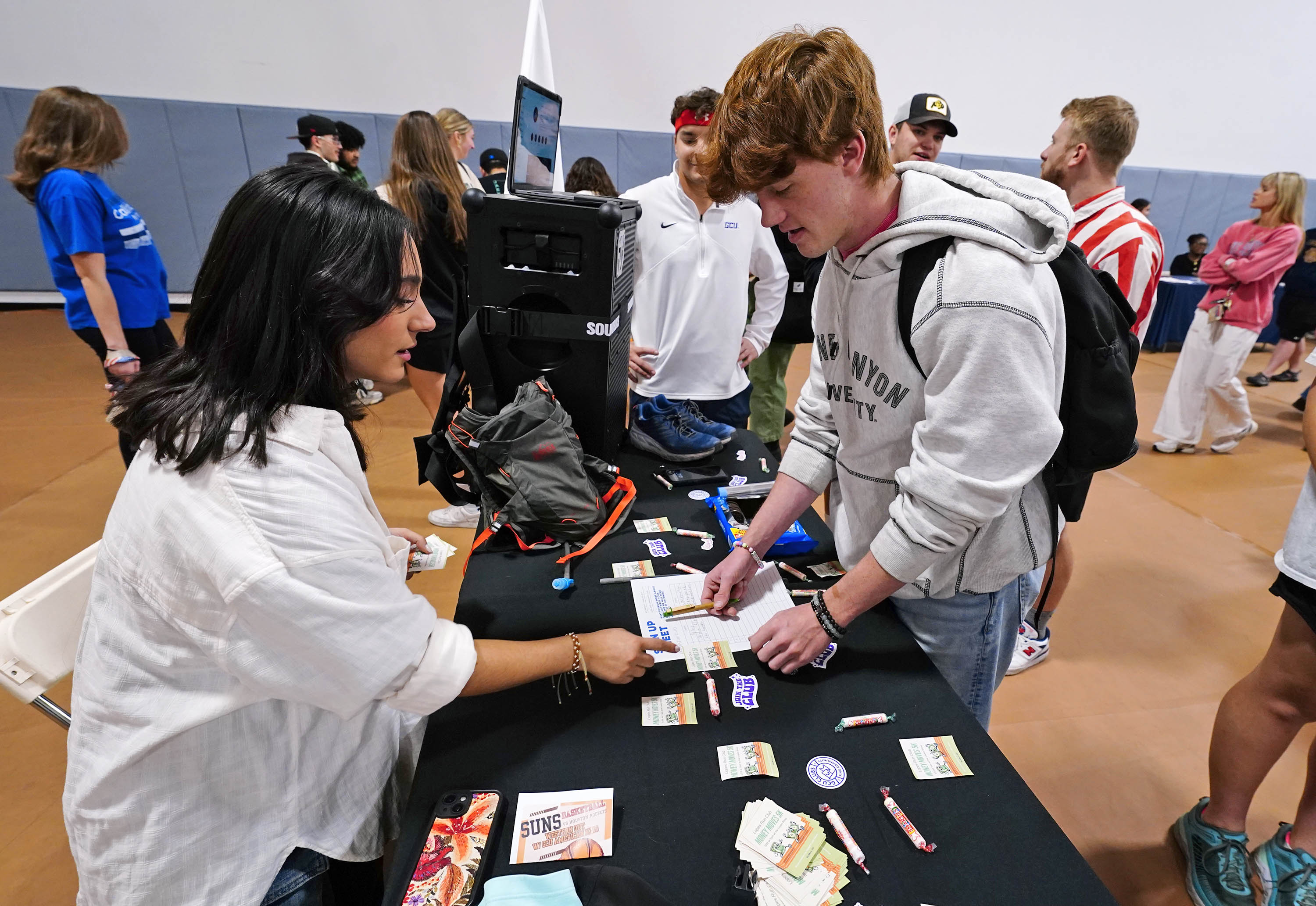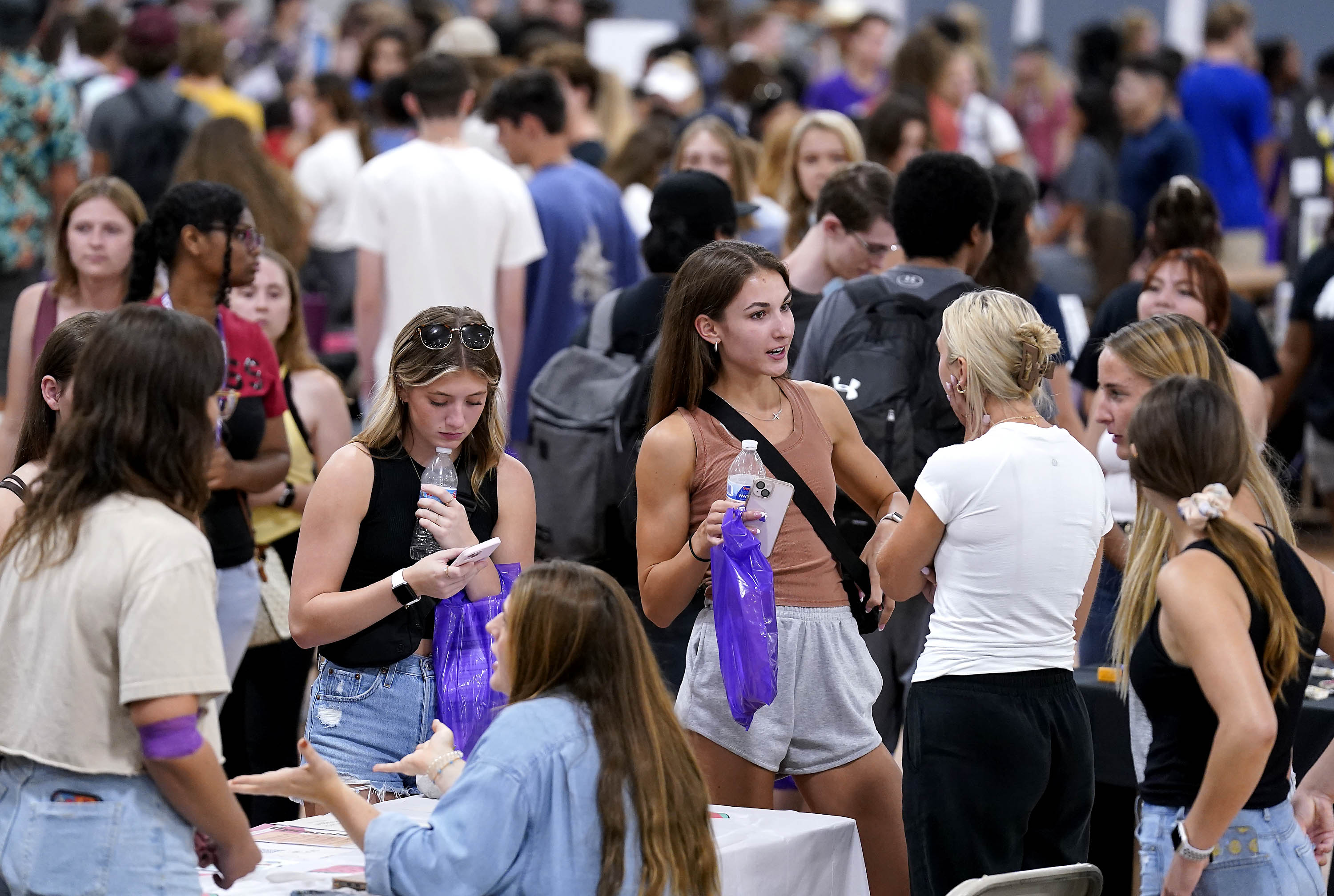
By Lana Sweeten-Shults
GCU News Bureau
You don’t have to sell biofuel researcher Dr. Galyna Kufryk on the finer qualities of cyanobacteria.
In her eyes, these microscopic, photosynthetic organisms, which can be used to produce a renewable, clean biofuel called molecular hydrogen, are the rock stars of the bacteria world.
It’s an opinion these days shared by some of the Grand Canyon University professor’s students, who are part of her research group in the College of Science, Engineering and Technology’s undergraduate Research and Design Program. The program gives undergrads research opportunities to make them more competitive in the workforce.
According to Kufryk, these cyanobacteria just might be the key to booting out dirty energy sources. You know the culprits: oil, coal, gas and the like. Sure, they produce energy, but they also spew out carbons and greenhouse gases, leading to the greenhouse effect, pollution and climate change – all bad things, particularly for oxygen-breathing humans.
“Unlike the traditional way (of making energy) that uses nonrenewable resources, like oil, for instance … these guys (cyanobacteria) are going to grow for as long as there’s sunlight and a little bit of mineral salts in play. They take care of everything else. They’re AMAZING,” the biological sciences professor said with a smile, showing appreciation for the microorganisms that have become the focus of her life’s work.

In the last couple of years she has expanded her work, looking beyond the commonly used species of cyanobacteria that scientists have been focusing on when doing biofuel research.
Kufryk ultimately wants to manipulate cyanobacteria to produce enough molecular hydrogen to fuel the world’s cars, buses and the like.
Her work has not gone unnoticed, considering the big interest in hydrogen as an alternative transportation fuel – it powers fuel cells in zero-emission electric vehicles. She often is sought out as a conference speaker internationally.
Over the summer, Kufryk presented her work at two conferences – the Federation of European Microbiological Societies in Valencia, Spain, and the “New Approaches and Concepts in Microbiology” symposium, organized by the European Molecular Biology Laboratory, a premier genomics research institution in Heidelberg, Germany. She also was invited to give a seminar on “Recent Advances in the Utilization of Cyanobacteria for Biological Production of Hydrogen” at the Institute for Plant Physiology and Genetics in Kyiv, Ukraine.
Hydrogen can be made by thermochemical processes using heat and chemical reactions or by splitting water using electrolysis or solar energy. It also can be generated through biological processes by using microorganisms, such as bacteria and algae, which is where Kufryk’s interest lies.
“Cyanobacteria live off the energy of sunlight, and so if you want to use them to produce any valuable commercial product, they’re among the most inexpensive producers," she said. "Traditionally, let’s say you grow microorganisms to get antibiotics, right? Well, they require sugars. Sugars are not cheap. So if you want to grow such organisms, that requires fixed carbon – a carbon that is found in sugars, amino acids, all organic compounds. Usually those systems that produce commercially valuable products that way, they are quite expensive, just because to grow that organism, you need expensive ingredients in the growth medium.
“Anything photosynthetic, like the cyanobacteria that I work with, does not require any fixed carbon. They use CO2 – carbon dioxide – from the atmosphere, and they use the energy of sunlight, which is pretty cool. So they are the most advantageous in terms of the cost of production.”
Kufryk said molecular hydrogen holds a lot of promise as a biofuel because of its extremely high energy density.
“So if you take a pound of gasoline, compare how much energy it has and compare that to a pound of compressed hydrogen. You have more energy in hydrogen.”
Also, using hydrogen as a biofuel means combining hydrogen with oxygen, which produces water rather than harmful emission gases.
“You don’t produce any dangerous compounds in the environment, and that’s a great advantage, especially in metropolitan areas," she said. "So for cities like Phoenix, San Francisco, New York ... if we look forward and we don’t want to have smog over our cities in the long run, we want as little as possible of anything gasoline-powered. We want to go electrical. We want to go hydrogen.”
The problem with using hydrogen as a fuel is the cost. Most of the hydrogen available for commercial use is produced by chemical means.
“It’s not really sustainable in the long run to rely on that as the only source of hydrogen,” Kufryk said. “Bioproduction, anything that you can get living creatures to produce is usually cheaper in the long run, especially in a system like this where you use the energy of sunlight. You don’t need to use expensive sources of energy to grow these things.”

Kufryk already has pictured a future of molecular hydrogen plants, where bioengineered cyanobacteria are grown.
“We can put them (the bioreactors) in the desert," she said. "We can put them on wasteland. We can put them in places where it’s not arable land. We don’t really use that land so much, right? So from a practical perspective, this is a great advantage.”
Corn bioethanol, which was a big deal two decades ago, ended up falling out of favor as an energy source since doing so drove up the price of corn, which also is a food source.
Kufryk and fellow researchers are looking to genetically modify cyanobacteria to the point where it produces enough hydrogen.
“Hydrogen is not their main product," she said. "They produce many other things. And so you can genetically modify them to curtail that production – you know, redirect more resources of the cell to produce hydrogen.”
Kufryk’s love of science started when she was just 9 years old. She accidentally walked into a chemistry lab and was amazed when she saw two colorless liquids turn into a colored one in a chemical reaction.
The Ukraine native said no one in her family is a scientist.
“I am the one bitten by the science bug,” she said.
She would go on to earn her master’s degree in microbiology and Ph.D. in biology from the Ukrainian National Academy of Sciences before heading to Arizona State University to do her post-doctoral work and to teach. She focused her doctoral and post-doctoral research on the biochemistry of photosynthesis.
Kufryk joined GCU in 2011.
“I was looking for something where I could teach but in a smaller class," she said. "You don’t feel as if you have that personal connection with the students in bigger classes. Just the sheer number makes it very hard for you to know your students and for them to know you. I think it’s what is unique about this school is that we still maintain that connection.”
At GCU, she was awarded with the Distinguished Faculty Scholar Award from CSET in 2014 and the Faculty Scholarship Recognition Award in 2017. Since 2013, Kufryk has been an organizer of the student research poster presentations on Health Sciences, Engineering and Technology Day. This year students presented more than 50 posters detailing their research – the largest number of students to do so since the event was started.
She has been able to do some of her research on the GCU campus of late since the addition of the undergraduate Research and Design Program. Kufryk wanted her undergraduate research students to look at the diversity of enzymes involved in hydrogen production since many types of cyanobacteria, from filamentous to unicellular, exist.
“We are trying to identify the most promising candidates for hydrogen production based on what enzymes they have available,” Kufryk said.
“There are about a dozen or so species of cyanobacteria that are heavily used. If you work in this field, you pretty much select one of those. … I’d like to look outside that because our analysis shows that there are a lot of species that have a good potential for hydrogen production. And that’s where I’m going.”
She also wants to take genes from other groups of organisms that produce hydrogen and transfer them into cyanobacteria.
“Genetically, cyanobacteria are very good as an object of manipulation. To a great extent, it’s a matter of transferring the genes necessary for hydrogen production into cyanobacteria, and making it work.”
Kufryk also doesn’t want to limit her research to single species of cyanobacteria and is investigating communities of these microorganisms.
“These species, they live in natural environments, a natural habitat, and are grouped with other species. Quite often, that relationship is quite important, and so we can look at the communities of organisms as possible producers instead of a single species as a producer.”
It doesn’t look as if Kufryk is anywhere near stopping when it comes to her work with cyanobacteria, these “amazing” organisms that might be the big answer to the energy problem.
As she talked excitedly about cyanobacteria and the student research, she said, “I’m really looking forward to expanding this research even further.”
You can reach GCU senior writer Lana Sweeten-Shults at (602) 639-7901 or at lana.sweeten-shults@gcu.edu. Follow her on Twitter @LanaSweetenShul.




